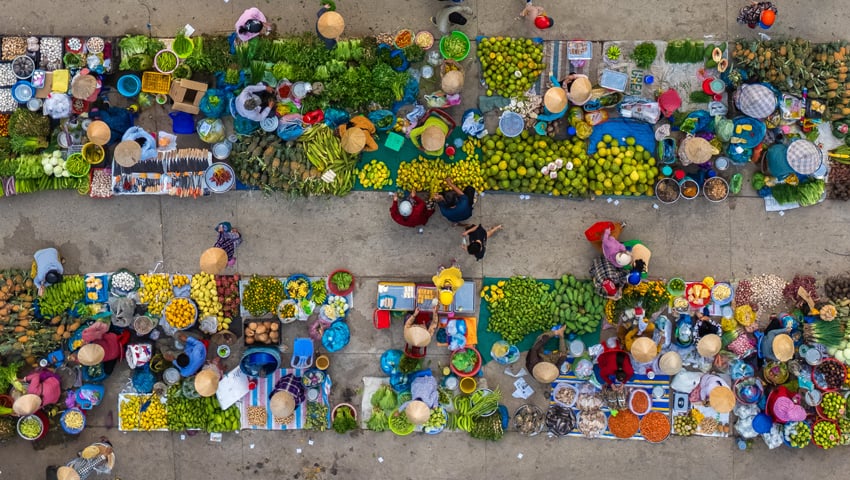- New research reveals local markets and food chains boost food security and resilience to shocks, provide nutritious food for poorer populations, support livelihoods, protect the environment, and strengthen communities.
- As progress on global hunger stalls, global experts urge a shift to resilient, localised food systems, and call for government action to bolster local markets.
With progress on world hunger in reverse, global food experts are today calling for an urgent shift to more localised and resilient food provision to achieve the goal of zero hunger by 2030. Nearly 30 per cent of the world’s population are facing food insecurity, while 600 million people are projected to be facing hunger by 2030, putting the world’s ‘zero hunger’ goal further away than ever.
The IPES-Food report, Food From Somewhere highlights the need for greater resilience in the face of mounting shocks. In recent times, the pandemic, the invasion of Ukraine, and escalating climate shocks have led to supply chain chaos, volatile food prices, empty shelves, and a surge in hunger levels. It comes as the UN reviews stalling progress towards the global ‘zero hunger’ goal (SDG2), and ahead of the latest comprehensive hunger update from the UN (15 July).
Million Belay, an IPES-Food expert from Ethiopia, said, “Global industrial food chains and ultra processed foods are not feeding the world, they’re starving it. Our food systems must become more localised and more resilient. Local food webs rooted in communities and cultures – or territorial markets – are our best bet to tackle hunger and sustain the livelihoods of small-scale producers, in Africa and worldwide. They’re the sturdy roots that nourish communities and provide stability, while global supply chains sway and snap in the storm.”
Global industrial food chains have demonstrated particular vulnerability to trade disruptions, climate impacts, and market volatility, while often undermining the livelihoods of small-scale producers, says the report.
The comprehensive review reveals that localised food supply chains offer a more resilient and equitable approach to food security.
These local food webs, or ‘territorial markets’, include public markets, street vendors, cooperatives, urban agriculture, and online direct sales, and rely on smaller-scale food producers and vendors serving communities. They demonstrate benefits for food security – including access to more diverse and nutritious foods, high degrees of resilience and adaptability to shocks, accessible prices, and environmental sustainability.
Additionally, they support the livelihoods of millions of small-scale producers, sustain diverse food cultures, boost biodiversity, promote community cooperation, and help feed up to 70 per cent of the world’s population while using less than one third of agricultural land and resources. While many corporate chains broke down during the COVID-19 pandemic, ‘territorial markets’ quickly adapted their operations and supply methods to keep communities fed.
However, these place-based food markets are penalised by trade and investment policies and agricultural subsidies, and often lack adequate infrastructure such as sanitation and storage facilities, finds the study.
The IPES-Food panel calls for urgent policy shifts to increase resilience in the face of growing hunger. It identifies a series of joined-up actions for governments including:
- Redirecting public procurement to support sustainable small-scale producers
- Shifting subsidies to invest in infrastructure and networks that underpin ‘territorial markets’
- Protecting local markets from corporate takeover and
- Encouraging sustainable, biodiverse farming and diverse diets
Jennifer Clapp, an IPES-Food expert from Canada, said, “In this era of rising hunger and ecological fragility, global industrial food chains are catastrophically liable to break down under the strain of frequent crises. To have a chance of reaching the world’s zero hunger goal by 2030, we need to reimagine our food systems. We need to bolster the food markets that serve the poor. And we must move towards more diversity in our food systems. Closer-to-home food markets and shorter supply chains can deliver resilience and benefit people, planet and communities. It’s about choosing ‘food from somewhere’ over food from nowhere.”
Read the IPES-Food report & summary, Food From Somewhere
